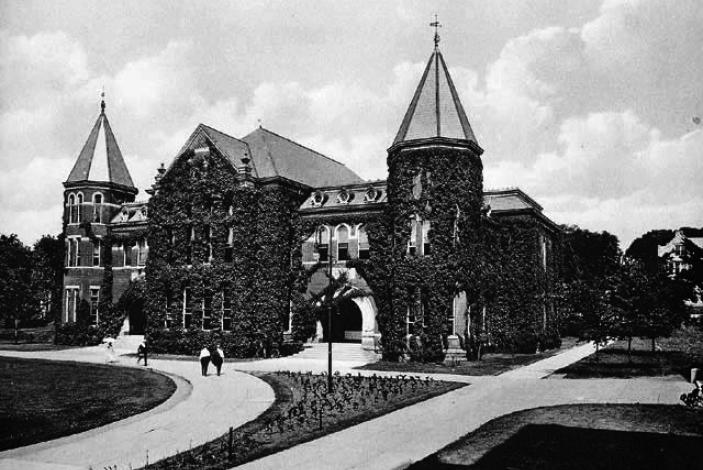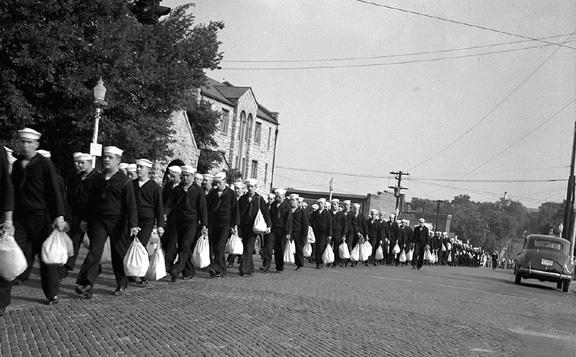
Celebrating 100 high-impact years: Part 5

The Trulaske College of Business is commemorating 100 years of excellence this year with a series on the history of the school, founded in 1914. The college’s history, along with photos from the last century, will be available in a commemorative coffee table book following the celebration. Reserve your copy today.
Celebrating 100 high-impact years: Part 5
By David LaGesse
Life at the University of Missouri changed dramatically and forever with the outbreak of World War II, which put especially heavy demands on those who taught business and government. Instructors at the School of Business and Public Affairs found themselves pulled into the war effort at agencies like the Office of Price Administration, and union expert Prof. Russell Bauder took a top job at the War Labor Board. Students by the scores signed up or were drafted.
It was a reprise of World War I, when the business school contributed more than any other MU division to national service – nearly half of its students and faculty enlisted in that Great War. During both conflicts, fraternities closed, clubs quit and publications folded as campus-wide enrollments plunged. Buildings instead filled with Army and Navy units using the grounds for training.
The military in those days had a big presence on campus even in peacetime. Along with other Land Grant colleges, Mizzou for decades required that all male students take basic military courses. Uniformed units and horse-drawn cannon frequently marched past The Columns on Francis Quadrangle.
But the end of World War II brought even more dramatic changes to campus. The draft and enlistments cut enrollment at MU to 1,500 total students in 1943 while the new peace sent 2,800 veterans to campus in the spring of 1946. A dozen temporary classrooms and scores of trailers sprang up to house the flood of students.
The campus revival extended to B&PA’s Commerce Day, which was suspended for the war years but reappeared in 1946. By 1947, the packed hallways spurred the school’s student council to expand the festivities to a Business Week. But the first week was planned “with more enthusiasm than good judgment,” Dean W. L. Bradshaw later recalled.
Numerous hoped-for speakers fell through, including no less than President Harry Truman, leaving the council to finally turn to the dean himself. Students also didn’t budget enough for the expensive orchestra they hired for the Derby Dance, forcing faculty to pony up money to avoid the musicians’ wrath.
During the war years, the Derby Dance had been one vestige of Commerce Day that students kept alive, but just barely. Now some 1,500 revelers filled Rothwell Gymnasium, giving hint to a period of unprecedented growth that was just beginning for Mizzou and its business school.


